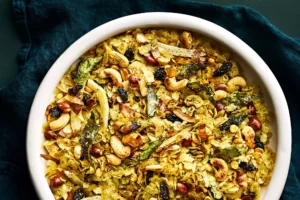Fiber comes in two forms: soluble and insoluble. Getting the right amount of both fibers can help digestion and may even cut down your risk for certain chronic diseases.
Benefits of insoluble fiber
Insoluble fiber doesn’t dissolve in fluids. Instead, it absorbs the liquids and sticks to other remaining materials to form a stool. This process leads to softer, heavier, and more regular stools.
Insoluble fiber draws water into your stool, making it softer and easier to pass out with less strain on the bowel. Insoluble fiber helps promote bowel health and regularity. It also aids insulin sensitivity, and, like soluble fiber, may help lower your potential risk for diabetes. Insoluble fiber is available in foods such as wheat bran, vegetables, and whole grains. It adds mass to the stool and looks to help food pass more quickly through the stomach and intestines.
Sources of insoluble dietary fiber:
whole-wheat flour
wheat bran
nuts
Beans
cauliflower
green beans
potatoes
Benefits of fiber to your body:
- Digestion: Regularity in bowel movement means better colorectal health.“Fiber makes stools easier to pass,” says Culbertson.
- Heart health: Fiber helps by lowering cholesterol and prevents and controlling high blood pressure.
- Cancer: Studies reveal that including a good amount of fiber in your diet can help prevent colorectal cancer and breast cancer.
- Diabetes: Fiber promotes better blood sugar control, thus reducing diabetes.
- Lifespan: Some scientists have stated that eating a high fiber diet will yield longer life.
- Weight management: Fiber helps you feel fuller for longer periods making you avoid overeating.
Benefits of insoluble fiber
- Helps your body process waste better.
- Improves bowel health.
- Prevents and treats constipation.
- Reduces potential risk for your colorectal conditions, such as hemorrhoids and diverticulitis.
There’s no need to track soluble vs. insoluble fiber intake rather, focus on the amount of fiber you eat daily. Here are the recommended amounts:
- Men 50 and younger: 38 grams.
- Men older than 50: 30 grams.
- Women 50 and younger: 25 grams.
- Women older than 50: 21 grams
You should check the nutrition labels to keep track of how much fiber you’re consuming. And if you’re one of the many who don’t get enough fiber, start slowly and work your way up, Culbertson recommends. Too much fiber at once can lead to gas pain and bloating.
Having a diet rich in a variety of whole foods, including fruits, vegetables, and legumes, is a great start to infusing fiber into your meals. while you may be benefitting from a fiber supplement, food is always going to be the best source.
The bowel is an organ that contracts to move contents through and excreet. Insoluble fiber helps by adding bulk and moisture to stools which makes it easier for the bowel to steadily push its contents through and therefore helps to prevent constipation. Because insoluble fiber helps to give stools moisture, it is important to drink the recommended intake of fluids. Haemorrhoids, also known as piles, are a swelling of tissue in the rectum or anus which can be caused by persistent constipation. Regularly straining to pass solids can add excess pressure on the blood vessels close to the anus, causing the area to become enlarged. Diverticulosis is when pouches bulge in the digestive tract form on the inside of the colon (large intestine) and cause bacteria to get trapped and can result in symptoms such as feeling sick and having a high-temperature fever, and rectal bleeding. Having a diet with a required source of insoluble fiber can lower problems associated with diverticular disease. Diabetic people will want to strike a balance between having food with a good source of insoluble fiber and keeping blood glucose levels stable. Some good sources of insoluble fiber such as potatoes and whole-grain foods are relatively high in carbohydrates so should be eaten in moderation, particularly if after-meal blood glucose levels are consistently too high. Generally speaking, non-starchy vegetables and fruits with lower carbohydrate content are a good way of getting insoluble as well as soluble fiber into your diet whilst not raising blood sugar levels too high. Non-starchy vegetables are particularly good for people looking to lose weight.
Our gut does have helpful bacteria which are vital for the health of our digestive system. Helpful gut bacteria plays a crucial role in helping the body to digest food for energy and promoting immune health.
Gut bacteria feed off insoluble fiber and so this form of fiber is needed to help maintain a healthy level of helpful gut bacteria

